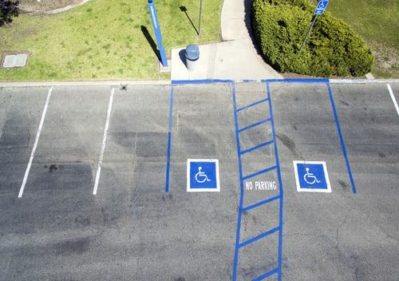Making Your New Business Location ADA Compliant
In 1990, the Americans with Disabilities Act (ADA) put regulations in place designed to specifically address the needs of Americans who deal with some kind of disability on a daily basis. The ADA requires businesses to follow these rules and regulations when it comes to both employees and customers with disabilities.
If your small business isn’t ADA business compliant, you could run into some trouble, including hefty fines. Yet, many small business owners aren’t fully aware of what the ADA really is, or what it means to be ADA-compliant. If you’re opening up a new location, it’s important to educate yourself on ADA requirements so you can make sure from the start that your business is up to date in following government regulations.
With that in mind, let’s look at the 2020 ADA requirements your business needs to meet in order to remain compliant.
Understanding Your Title
Small businesses are usually given a title based on their size. If your business has 15 or more employees, you’ll probably be considered Title I. If you have accommodations for the public or provide goods/services to customers, you’ll likely be listed as a Title III. Your title determines which regulations you’ll need to follow in order to be ADA-compliant. Compliance is specific to your type of business and its size.
Making Reasonable Accommodations
Again, the requirements your business faces will be specific to the type of business you have. A good rule of thumb is to understand that there should be reasonable accommodations for those with disabilities. Some of these accommodations might include:
- Written policies for employees
- A willingness to make minor adjustments on procedures for those with disabilities
- Allowing service animals
- Allowing mobility devices
- Removing barriers to existing structures (where applicable) or making new structures wheelchair-friendly
f you’re a busy clothing store in a downtown area, it might be more important for you to have a wheelchair ramp that leads up to your business. If you’re a store that operates exclusively online, you can remain compliant by making sure your website and digital resources are easy for people to read or hear (when necessary). Think about how the way you operate your business might be different if you were looking at it with a disability of your own. By putting yourself in those shoes, it can make it easier to determine which areas need to be compliant.
Common Mistakes and How to Avoid Them

Without some guidance, it can be easy to overlook certain areas where your business may not be ADA-compliant. For example, you may not think of a door as a barrier but, if it uses over five pounds of pressure to open, it may not be accessible for everyone.
Other common oversights include:
- Improper signage and labeling (especially in bathrooms)
- Wheelchair ramps that have too steep of a slope
- Lack of clearance space for wheelchairs to move about freely
You can avoid some of these mistakes by looking over the U.S. Department of Justice’s Primer for Small Businesses. There are also ADA centers throughout the country and resources online that can help you to determine which regulations need to be followed within your business. By taking ADA-compliance rules seriously, you can avoid fines and penalties, but you’ll also show your employees and customers that everyone matters, whether they have a disability or not.




